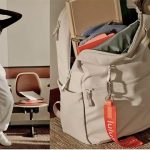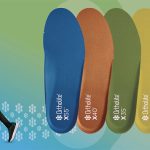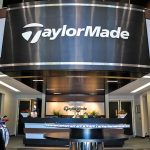Nike, Inc. reported sales and earnings in its fiscal third quarter ended February 28 topped Wall Street targets as strong demand drove broad-based growth across brands, channels and geographies. However, the sportswear giant lowered its margin guidance for its fiscal year as it has some work to do in whittling down bloated inventories.
Nike ended the quarter with inventory up 16 percent compared with the same period a year ago, showing progress after inventories had swelled by more than 40 percent in each of the prior two quarters. However, Nike guided its FY23 gross margin to decline approximately 250 basis points, the low end of its previous guidance range. The lowered margin guidance was attributed to ongoing and accelerated actions to reduce inventory by year-end, elevated freight and logistics expenses, including higher supply chain network costs in North America, and 100 basis points of foreign exchange headwinds.
On the positive side, Nike now expects high-single-digit growth in FY23, up from mid-single-digit growth guided previously, including approximately 600 basis points of foreign exchange headwinds. The higher target reflects healthy demand for the Nike brand.
“What’s clear is our brand strength has strong across demand,” said John Donahoe, president and CEO, on an analyst call. “That’s both for Nike and Jordan. You saw strong growth across channels and digital this year and this quarter, as well as our direct and wholesale channels. So, the brand connection with Nike across our major fields of play across Nike and Jordan is as strong there as anywhere.”
Matt Friend, CFO, said on the call, “Two quarters ago, we took clear and decisive action in response to changing marketplace and supply chain conditions. Our top priority was to strategically manage excess inventory and drive a quicker return to a healthy pull market, and our Q3 results prove that Nike is leading the way.”
Friend noted that Nike has made progress in reducing inventory levels in the most-challenged market, North America. Inventories in the region were up 14 percent in dollars, down from being up 54 percent at the close of its fiscal second quarter and being up 65 percent at the close of its fiscal first quarter.
China, where Nike showed modest currency-neutral growth after five straight quarters of declines, ended the quarter with inventories down 4 percent after being down 3 percent at the close of the second quarter.
Friend also noted that the company progressed in reducing apparel inventory levels, which were elevated due to the late arrival of seasonal product. In North America, apparel units were down high-single-digits.
“We are confident, looking ahead with strong traffic and retail sales growth and reduced inventory buys for the spring and summer seasons, that we will exit the year with healthy inventories across the marketplace,” said Friend. “In fact, given our brand momentum, we now intend to move through even more units by year-end than we had previously considered.”
In the third quarter, revenues for Nike, Inc. increased 14 percent to $12.4 billion, easily topping Wall Street’s consensus estimate of $11.37 billion. Sales jumped 19 percent on a currency-neutral basis.
Revenues for the Nike Brand were $11.8 billion, up 14 percent on a reported basis and up 19 percent on a currency-neutral basis, with double-digit growth in North America, EMEA and APLA. Greater China grew 1 percent on a currency-neutral basis despite a challenging December following the shift in the country’s COVID-19 policies. On a reported basis, revenues for Greater China declined 8 percent.
Revenues for Converse were $612 million, up 8 percent on a reported basis and up 12 percent on a currency-neutral basis, led by double-digit growth across all channels in North America, partially offset by declines in Asia.
Nike, Jordan and Converse all drove double-digit currency-neutral growth this quarter.
“Consumer demand for our portfolio of brands remains uniquely strong, fueling unit growth of approximately 10 percent despite increased macro uncertainty,” said Friend.
The CFO added, “Revenue from performance dimensions grew double digits versus the prior year with strong momentum from the Phantom GX, Invincible 3, LeBron 20 and other new product innovations. Revenue from lifestyle dimensions also remained strong as consumers continue to shift wallet share towards sport-inspired products that provide innovation, comfort and style.”
By channel, Nike Direct outperformed with sales growing 22 percent, led by 24 percent growth in Nike Digital which drove Nike’s digital share of business up to 27 percent. Nike stores saw 19 percent growth. Member buying frequency increased and store sales grew across all geographies.
Wholesale sales grew 18 percent, driven by strong partner demand based on accelerating retail sales, higher shipments based on earlier supply availability and lower shipments in the prior year given supply constraints. Friend said, “Our wholesale channel delivered a second straight quarter of outsized growth with a planned recapture of retail partner open-to-buy on improved inventory supply versus the prior year and strong consumer sell-through.”
Gross margin decreased 330 basis points to 43.3 percent due to higher markdowns, increased product input costs and elevated freight and logistics expenses, including higher supply chain network costs in North America, partially offset by strategic pricing actions. This also includes approximately 140 basis points of impact from unfavorable changes in net foreign currency exchange rates.
Friend added that despite the promotional environment, full-price sales remain strong with Nike marking its seventh consecutive quarter of ASP gains. He said Nike benefited from strategic pricing, product mix and a shift to DTC more than offsetting the short-term cost of promotions to liquidate excess inventory. Friend said Nike has been able to increase prices this year mid-single-digits on average across its portfolio.
SG&A expense increased 15 percent to $4.0 billion. Operating overhead expenses increased 17 percent to $3.0 billion, primarily due to wage-related expenses and Nike Direct variable costs. Demand creation expense was $900 million, up 8 percent, primarily due to advertising and marketing. As a percent of sales, SG&A expense was 32.0 percent of sales against 31.6 percent a year ago.
Net income declined 11.1 percent to $1.22 billion, or 79 cents a share, on the margin pressures, although it was well above Wall Street’s consensus estimate of 51 cents.
By region, sales in North America grew 27 percent in the quarter on a currency-neutral basis to $4.91 billion, with Nike Direct up 23 percent and Nike Digital up 25 percent. EBIT grew 23 percent on a reported basis.
Friend said of the North America region, “Consumer demand drove strong growth across performance and lifestyle. LeBron, Giannis and Luka grew high double digits, fueling market share gains in basketball. A strong Invincible 3 launch energized the marketplace, doubling digital sales compared to the Invincible 2. Air Max grew double-digits, and the Jordan Brand kicked off its 23rd year, also known as Jordan Year, with strong double-digit growth, incredible momentum, especially with women consumers and even greater potential with a path toward becoming the #2 footwear brand in North America.”
Digitally, Friend said member moments throughout the quarter drove double-digit growth in repeat member buying in the region. Friend said, “On the Nike app, we integrated personalized product recommendations for members using available inventory to increase sell-through of key products. In addition, return on ad spend improved for another quarter as we test personalization and consumer experiences with activity and preference data.”
In EMEA, Q3 revenue grew 26 percent on a currency-neutral basis to $3.25 billion with strong growth across all Western European markets. Nike Direct’s sales jumped 39 percent and Nike Digital gained 43 percent. EBIT grew 10 percent on a reported basis. Said Friend, “New product innovation resonated deeply. Invincible 3 drove strong sell-through in Nike Direct and with our retail partners. Our statement Go Leggings delivered positive early results with strong sales in Nike Live and Nike Rise Doors where we’ve been able to create a unique retail experience for her.”
In global football, Nike gained share with the launch of the Phantom GX plus sustained momentum in the Mercurial franchise. Online, traffic grew double digits in EMEA with average order value growing mid-single digits, and Nike.com leading new member acquisition. On the Nike App, member engagement grew double digits with the new Jordan member home button driving the highest click-through rate ever on the app.
In Greater China, Q3 revenue grew 1 percent on a currency-neutral basis, declining 8 percent on a reported basis to $1.99 billion. Nike Direct sales grew 3 percent on a currency-neutral basis with Nike Digital declining 11 percent as consumer buying shifted to brick-and-mortar with the countries reopening. EBIT declined 10 percent on a reported basis.
“In December, we managed through disruption from the country’s shift in COVID policies with widespread door closures,” said Friend. “Starting in January, we began to see a rebound in brick-and-mortar traffic with strong retail momentum around Chinese New Year, accelerating into February, especially as our clean inventory position enabled us to serve consumers with fresh seasonal assortments.”
Performance footwear outpaced lifestyle in China by running up double-digits, led by the Invincible 3. In basketball, LeBron 20 and the GT Series stood out. Growth in kids surpassed other consumer segments with the positive response to hyperlocal collections, such as its Chinese New Year Leap High Express Lane pack.
“We are optimistic as our business momentum continues to build,” said Friend. “In Beijing, Nike’s brand strength is deepening, extending our lead as the #1 cool and favorite brand. We are also seeing the benefits of a more local operating model as we have made investments over the past two years to serve the marketplace’s unique needs. Long term, we are confident that the fundamentals of growth for Nike in China remain strong.”
In APLA, Q3 revenue grew 15 percent on a currency-neutral basis to $1.6 billion, including approximately 8 percentage points of headwind due to the first full quarter of impact from the transition of its Chile, Argentina and Uruguay businesses to a distributor model. Nike Direct was up 22 percent with Nike Digital growing 23 percent. EBIT grew one percent on a reported basis.
Football grew double-digits in the APLA region with a successful Phantom GX launch, strong sales for the Men’s World Cup in December, and excitement building for the Women’s World Cup this summer. In Running, strong momentum was seen across Nike brand’s top footwear franchises, including double-digit growth for Invincible, Infinity and Pegasus. In fitness, the Metcon Free grew triple digits. Said Friend, “We also continue to accelerate opportunity in this geography through marketplace innovation. This quarter, we expanded Express Lane to bring more Hyperlocal products to consumers. In March, we introduced the Nike App in Korea, which launched as the #1 free shopping app in one of our most digitally connected markets. And later this week, we’ll open our newest World of Flight door in Tokyo, expanding the Jordan Brand’s international growth.”
The updated full-year guidance translates into flat to low single-digit revenue growth in the current fiscal fourth quarter. Friend also said that since Nike had strategically reduced inventory commitments for the spring and summer seasons to work through excess and early-arriving inventory, wholesale revenue growth is expected to moderate for the next few quarters.
Photo courtesy Nike
















